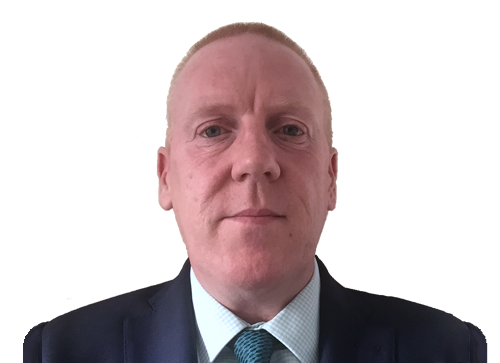posted on May 23, 2016 by Rachael Stormonth
Next year will mark Capgemini’s 50th anniversary, and it is looking to its U.S. operations to spearhead a reinvention as a next generation IT and business process services provider, one where it positions as an innovator that is bold and capable of acting at speed in helping clients optimize and disrupt the way they do business. This is reflected in an aspirational statement for the group shared by CEO Paul Hermelin: “Working for the most demanding clients, on the most challenging projects, with the most talented people”
The importance of the U.S. to Capgemini’s reinvention was reflected by the decision to locate its annual global analyst event in San Francisco, where it showcased its latest Applied Innovation Exchange (AIE), opened four months ago. It is evident that the recently integrated iGate, also the much smaller recent acquisition (~60 employees) of Fahrenheit 212 are central to the future evolution of Capgemini on a global basis.
Top Priority: Integrating iGate
The fact that post IGATE, North America has become Capgemini’s largest geography and its headcount in India has reached 90k has been well publicized by the group.
When Hermelin shared the new strategic priorities for the group, as determined in the latest rencontre, integrating iGate was at the top. Hermelin was referring not so much to the types of cost synergies that are to be expected in a post-merger integration scenario of this scale, but to revenue synergies, in particular from having Capgemini gain from the IGATE approach to account development. Hermelin has publicly commented for some years that client intimacy was an area that needed strengthening, and leveraging the IGATE account management model, starting in iGate’s core U.S. market will be a major development in this respect.
As part of this focus on strengthening client intimacy, Capgemini intends to move to a vertical-led go-to-market structure, spanning all its service lines. The natural starting point is Financial Services, leveraging both iGate and the former APP.S 1 super-regional applications service unit (based on the former Kanbay, which had itself brought in offshore delivery capabilities and strong account management), and expanding the APP.S 1 go-to-market to cover all service lines, including IT infrastructure services (which has new leadership). This vertical-led go to market is also starting in Retail/Consumer Products with a cluster of around 10 global accounts. The intention is to develop and leverage best practice across the accounts and use the cluster as a platform for innovation and collaboration. This will be a major evolution for a group which has for years sought to move beyond its background of country-based fiefdoms with a series of global initiatives.
Another capability brought in by IGATE is its ITOPS platforms, in particular its IBAS TPA administration platform. Expect to see further investment in the next few years by Capgemini’s Business Services unit on BPaaS, in particular in selected BFSI sectors. It is also looking to leverage the Odigo multi-channel contact center platform, brought in with the Prosodie acquisition, in some of its BPO delivery.
Portfolio Development Priorities: Cloud, Digital, Business Services
The second on the list of strategic priorities for Capgemini Group as laid out by Hermelin relates to the portfolio, and he mentioned three areas: Cloud, Digital, and Business Services, all to be expected Capgemini estimates that cloud and digital services accounted for ~22% of its total revenues in 2016, and grew at over 23%.
This blog does not have the space to look at the offerings and developments in Capgemini’s cloud services portfolio, which enjoys the umbrella brand of “cloud choices” (we will be looking at this in our next Key Vendor Assessment on Capgemini).
Looking instead at Capgemini’s positioning today around Digital (to which more attention was paid at the event) it is evident that some progress has been made recently and that there will be continuing investment, again with the U.S. being at the heart of this.
Capgemini describes its offerings around digital transformation in four areas:
- Digital Customer Experience (DCX), launched in 2014, recently enhanced with the acquisition of German Salesforce specialist Oinio
- Insights and Data, launched 2015 (data collection; data conversion; also creation of platforms to manage insights and data)
- Digital Manufacturing: a new set of global offerings being launched around IT/OT, e.g. for preventative and proactive maintenance, for shorter, more agile product development. GE Digital presented at the event, and Capgemini is one of the early SI partners for GE Predix – expect to hear more about Digital Manufacturing in 2016
- Digital Innovation (Fahrenheit 212, see below).
It is developing and scaling capabilities in each of these four areas, and also intends to develop industry-specific focuses to each, starting with insurance and consumer products/retail. Capgemini is establishing digital leaders in each major geography, appearing to be starting with the U.S., and building teams in specific sectors
Innovation: AIE and Fahrenheit 212
Also key to building its market positioning around Digital and innovation is the concept of the AIE, first introduced last year. Capgemini currently has a network of nine AIEs, some of which have an industry focus (e.g. Lille and retail). San Francisco, which forms Capgemini’s basis for joint innovation with Silicon Valley start-ups, is the flagship. Most, if not all, of the larger IT services providers are building their own versions of innovation centers, and these can fulfil a variety of purposes. So what is distinct about Capgemini’s approach? The clues are in the first and third words of the AIE name: Applied and Exchange. Capgemini highlights, that the AIE approach comprises five elements, including the following three:
- A framework providing discipline to the design principles of “Applied Innovation” (speed, scale, safety, certainty)
- The AIEs being networked (rather than acting as individual labs), thus able to harness group capabilities, again breaking down any historic geo silos
- A global ecosystem (including 3rd party R&D, academia, tech start-ups via venture funds and PE partners, alliance partners, client co-creation)
Capgemini is placing considerable emphasis on building its AIE network. In general, innovation centers being opened by IT services providers are primarily intended to act as door openers, usually for new opportunities within existing accounts, and provide a format for partnering with tech start-ups. As well as the concept of “applied innovation as a service”, Capgemini is also looking for its AIEs to both extract innovation from and push innovation back into the group. This is part of the wider push to be more integrated in leveraging Capgemini’s assets globally, across both geographic and service line structures.
We also learned more at the event about the capabilities brought in to Capgemini by Fahrenheit212, acquired this February, an innovation strategy and consumer-centric design firm headquartered in NYC, with a smaller office in London, with ~60 employees. Fahrenheit 212 brings in a model it has developed for the development of innovative products and services for a client base that has included Coca Cola, Samsung and Marriott; also an entrepreneurial approach, often agreeing with clients a performance-based compensation model for projects. Now part of Capgemini Consulting, the expectation is that it will help strengthen Capgemini’s ability to position on innovation when assisting clients in their digital transformation. Capgemini claims that, rather than embark on a series of local acquisitions, it is looking to replicate Fahrenheit capabilities in other geos.
“Attract and develop the best talent”
This was third on the list of strategic priorities shared by Hermelin. Capgemini has shared for some years now various initiatives to flatten its pyramid structure and increase the way it uses India capabilities. Among the focus areas for 2016 that were shared were increased recruitments of digital technology specialists, and a reskilling plan in Europe, targeting ~1.5k employees.
Capgemini also anticipates that AIEs and other new types of workplace environment will add to its attractiveness as an employer of digital talent
Competitiveness: Push on automation at Group level
Every IT and BP services provider is on some form of automation journey; some are articulating more clearly than others what vendors and tools they have applied, are applying or considering applying for monitoring, to automate, to orchestrate, and also for cognitive automation.
At the event, Capgemini highlighted that
- Automation is a strategic priority for the group, led by the group Competitiveness function, and covering all its service lines, in particular operations
- Its approach to automation is disciplined and integrated, with a framework for “Intelligent Business Automation” that spans its operations services
We were shown some client examples and the benefits achieved, e.g.:
- In faster release cycle times through DevOps
- Incident reduction through application portfolio management
- In reducing cycle time and cost of quality and improving first pass rate through test automation
- In efficiency improvements through applying RPA to order processing
And using itself as a reference point for HR departments, Capgemini is also using IBM Watson internally for resource planning and fulfilment.
The reality is that at the moment, Capgemini (and this is true of every other IT service vendor that we have spoken to) cannot predict when that all important inflexion point at which the efficiency savings (ignoring the other benefits) from automation in its delivery of a managed service outweigh any committed price reductions.
Some 19th century literature (e.g. Henry James) looks at the push and pull tensions between the old world of Europe and the “new world” of the U.S. What is happening at Capgemini is reminiscent of this: Europe is where large skill reskilling is taking place and where the vestige of some old fiefdoms are still being removed; the U.S. is spear-heading developments that will lead to a rejuvenated and the new revitalized Capgemini Group that, aged 60, will look and feel less French, and at a time that, symbolically follows the passing of its founder Serge Kampf.
NelsonHall will be publishing an updated Key Vendor Assessment on Capgemini shortly, which will look in more detail at the group's priorities. For details, contact [email protected].



May 24, 2016, by Andy Heppelle